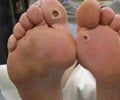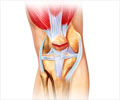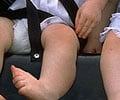Goals of Treatment & Types of Orthoses
The ultimate aim of orthotics is to gift comfort to the patient; to reduce the burden awarded by a physical deformity or an ailment. Setting goals for management takes into consideration three targets:
- Prevent impairment
- Reduce functional limitation
- Minimise disability
The design, durability, cost, and acceptability of orthoses depend on the physical and aesthetic property of materials used. Orthoses are mostly composed of plastic and metal. Leather, rubber, wood or cloth elements may also take part in the manufacture. Materials differ in strength, weight, appearance, and malleability.
Nomenclature is based on the involved body part and the orthotic function served. Accordingly there are:
- Lower limb orthoses
- Trunk and cervical orthoses
- Upper limb orthoses
Lower Limb Orthoses
- Foot orthoses (FO): This could be an insert worn inside a shoe (internal modification) or an external modification, which is secured to the sole or heel.
- Ankle foot orthoses (AFO): Here part of the leg is also covered along with the foot.
- Knee orthoses (KO): Covers parts extending from distal thigh to the proximal leg.
Notice that just as I had mentioned before naming an orthoses is simple; the name is self explanatory. You may hence very well guess what knee-ankle-foot-orthoses (KAFO), Hip orthoses (HO) etc signify.
Lower limb orthoses serve their function by transferring forces, or assisting motion.
Trunk and Cervical Orthoses
Reduction of pain and deformity are often the indications for prescribing neck and trunk orthoses. Unlike the lower limb orthoses, their action is by arresting motion or protecting body parts. The most commonly used trunk orthoses are ‘belts’ or ‘corsets’.
Terminology is again derived from the area of the body covered: Lumbosacral,
Upper Limb Orthoses
They range from appliances for the shoulder (for example slings), to elbow orthoses, to hand and wrist-hand devices. Based on the functions served, these may be classified into:
Assistive or substitutive orthoses: Helpful to patients with
Protective orthoses: They protect an affected body part from incurring further damages like contractures (which occur following burns); reduce pain as required in arthritis.
Corrective orthoses: They are used to increase the range of motion of a joint.













